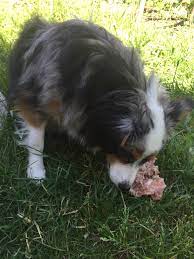Raw Food Diet for Dogs and Cats
Posted by RJewel on Nov 29, 2016
Our dogs and cats are natural carnivores. Have you started looking into a ‘raw food diet for your carnivore? If not this is the most important key to a holistic health program for all domesticated cats and dogs. Your dog has evolved from the wolf, and it’s digestive system is quite the same even after thousands of years of domestication. Carnivores have very short intestinal tracts geared to the consumption and digestion of raw foods.
Canines are considered “opportunistic carnivores” which means they will eat a variety of grasses, berries and insects in addition to prey. Your cat is a true or “obligate” carnivore (meat only diet) and is specially designed by nature to hunt small rodents and birds.Her digestive tract, as well, is intended to assimilate raw meat best.
The Benefits of a Raw Food Diet
Raw food diets have been shown to help the body deal with many common ailments such as flea infestations, hot spots, continual shedding, poor dental & gum health, allergies, gastro-intestinal problems, immune disorders and degenerative diseases. Diet is the foundation of health. The fresher the diet, the more nutrients are available for the animals system to utilize in building immunity, healing from illness and warding off disease.
HARE TODAY OFFERS PREY MODEL RAW DIET YOU CAN ORDER ONLINE:

Raw diets have been common practice in European countries for decades, especially Germany, where it is commonly recommended by veterinarians. The fear of feeding raw meat in this country seems to stem from a fear of salmonella, e. coli and parasites. In over 10 years of feeding raw food and seeing countless animals on raw food diets, salmonella and e. coli have not been seen to be a problem. (Remember, their digestive systems are designed to accommodate raw meat.) Parasites could be contracted through eating wild, whole prey or game meats, but is much less likely from properly handled human grade meats.
This is why I recommend using 'colloidal silver for pets'for clean-up after handling meat on your countertops and cutting board, as well as in your dog or cats drinking water as a precaution for bacteria, although their digestion is naturally able to handle any bacteria in the meat.
Infection is more likely to occur through ingestion of feces or soil, or poorly handled meat. Some exceptions to “raw is better” are the older, weaker animal who may not tolerate raw food, or animals with certain gastro-intestinal problems where the gut has to be restored to a healthier state using herbs, probiotics, enzymes, colloidal silver for pets and/or other supplements. In these cases, a home prepared, cooked diet the best substitute for a raw food diet.
Raw Food Diet
Ideally, our companions would eat an all raw diet that includes some viscera, as in green tripe, liver, heart, kidneys and raw meaty bones. Generally, the more raw food you can include in your companion’s diet, the better – but some is better than none. Some pet owners choose to feed their companions a ½ raw and ½ dry (dehydrated or kibble) Ideally the kibble you give should be starch free. Many dry foods of high quality today contain potatoes as a big part of their ingredients. This is not the ideal food for dogs or humans either. It turns to sugar quickly in the bloodstream and leads to blood sugar problems like diabetes.
There are also many good brands of dehydrated and frozen raw dog foods as well. These can be used if you cannot feed raw meat with bones. However, the best way to feed your pets is fresh raw meat, bones and organs just like in the wild. This is what they love and crave.
Vegetables or Grains
Many people wonder about feeding dogs vegetables, fruits and starches. The reason it is not something I recommend feeding is because canines do not manufacture the enzyme amylase in their saliva to properly digest it. For starch eating animals the process of breaking down starchy carbohydrates before they enter the stomach and is responsible for the majority of starch digestion. Dogs do not have this salivary amylase. Animals that are omnivores and herbivores produce amylase in their salivary glands, however carnivores do not have this ability.
Dogs need to make amylase later in the digestion process when they are fed vegetables, grains and other carbohydrates. This encumbrance is put on the pancreas. which begin to tax the organs after a while.
Eating grains and veges creates a burden for the pancreas to produce a larger amount of amylase to deal with the starch, cellulose, and carbs from the plant matter. Because of the lack of salivary amylase, a dog’s carbohydrate digestion is much more difficult.
Dogs don’t naturally come supplied with Amylase and maltase, the enzymes needed to break down carbs in the right places like in the herbivorous and omnivorous animals. Herbivores may have as many as four stomachs and both omnivores and herbivores have a considerably longer digestive tract than carnivores. The bottom line is that grains, fruits and vegetables aren’t natural foods for dogs and are foods they can’t digest as effectively and efficiently as their omnivore and herbivore counterparts. It’s like putting 87 octane gasoline in a sports car. It might still run, but it will be running far less efficiently. Since a carnivore’s digestive tract and digestion time is considerably faster, these foods will be eliminated before sufficient digestion and vitamin and mineral absorption can occur.
Can I feed both Kibble and Raw Food?
See our post here about feeding carnivores a kibble diet:
Why not Kibble?
You can try giving dry food for one meal, preferably feeding raw for one meal each day and dry or cooked for the other. This is only if you cannot yet imagine going 100% raw for your dog.
I give dehydrated fresh pastured raised chicken gizzards as treats. Or I also use Ziwi Peak raw dehydrated food as training treats.
It does not have to be complicated – you can feed raw chicken and turkey necks and chicken backs as part or all of a meal several times a week. Raw poultry bones do not splinter, they crunch. This is a great way to clean teeth, exercise chewing muscles, and provide a natural source of balanced calcium and phosphorus, as well. As always, naturally raised, hormone and antibiotic free or organic meat is best. For my little 10- 12 lb dogs I feed them organic grass fed beef, lamb, and goat or venison when I can get it. Also green tripe, which is high in healthy probiotics ( I have shipped from California) , free range chicken frames, necks, wings and offal. ( liver, heart, kidneys, gizzards and chicken feet)

When introducing raw bones to dogs they may experience diarrhea, constipation, or both as their systems adjust. Remember to go slowly and feed small amounts at first. When beginning the introduction of raw bones, it may be helpful to crush them with a hammer or in a meat grinder until your dog becomes fully transitioned to a raw diet. For cats bones can be ground. If your companion has a delicate digestive system, consider grinding meat and bones through a 1/4 inch blade before feeding. Ground bones do not have the same teeth cleaning benefits as whole bones, however. You may also see similar symptoms as your companion’s system goes through a detoxification process during the transition to a healthier diet. Again, the key is to go slowly and persevere. In the long run, your companion’s increased health and vitality will be the ultimate reward.
Obvious precautions should be taken when feeding raw meat – wash hands thoroughly after handling the raw meat. (spray with colloidal silver after handling meat) Thaw meat in the refrigerator, not sitting on the counter at room temperature. Or even feed some of the organ meats partially frozen. My dogs prefer them crunchy. Warm water can be used to thaw backs, necks or feet or warm the food after it has been mostly thawed in the refrigerator. Do not microwave raw food as the live enzymes are damaged and bones will harden even in just 30 seconds of micro waving. We do recommend avoiding pork and raw salmon unless frozen for at least 3 weeks first. If you are concerned about bacteria, you can rinse it with colloidal silver or with several drops of food grade hydrogen peroxide in a sink of water or 1/2 teaspoon liquid grapefruit seed extract in a sink of water to help kill bacteria on the surface.
Transitioning to A Raw Food Diet for Pets
Most people switch their dogs cold turkey. With maybe a day of fasting in-between to clear out the system. They stop feeding kibble one day, and then start feeding raw the next.
Start off slow with adding variety. Too many different types of meats can cause stomach upsets- so, start slowly. Pick one protein and feed that for a week or 10 days- (it depends on your dogs reaction). Many pet owners start with chicken because it is an easily digestible protein source that is relatively inexpensive and is easy to get.
But if you want to start with something different, like pork, lamb, venison or beef, then by all means do so. Make sure to give the types of raw meaty bones that is suitable for your pet.
If you have a small breed dog, give a chicken thigh or wing. If you have a larger breed give an entire chicken quarter. And always feed it raw and whole—do not have it ground. One of the great benefits of feeding a raw diet is to give your dog a jaw and teeth experience that helps to remove plaque from their teeth, while preparing the digestive system for digesting meat while at the same time it satisfies your pets need to 'chew' both mentally and physically.
Add more variety into the diet slowly. Do not worry about "balancing the diet" quite yet. No need for adding in wide variety of raw meaty bones and organs right away. You can begin to work up to variety slowly over time.
There is no need to rush into adding more meats- because adding new meats, especially liver and organ meats too soon can result in diarrhea. Your pet is not going to suffer in any way from just having one type of protein in the beginning for a period of time—the raw food source it will be eating is far better than any kibble and contains just what your dog and especially cat needs nutritionally. If you are transitioning a cat you might need to do things a bit different.
Let your dog's system adjust to eating natural, species appropriate diet. Remember, your pet has been eating a overcooked, difficult-to-digest, artificial diet that is WAY different from a raw, natural raw meaty diet. Your pet may have a suppressed immune system and possibly suppressed digestive enzymes, and just needs time to get its system up and running.
Once your dog is used to eating the new diet with raw meaty bones try adding the next protein source: about 5% of their diet can be liver and organ meat eventually as you work up to it. Kidney, green tripe, lamb, beef or chicken liver. Add a new new protein lamb, beef, venison pork. However, do watch and see, and if need be take things slowly. Let your pet adjust to the new food for a while before adding another new food. Always add slowly, and always give the animal time to adjust to the new food. And remember: you do not have to do this alone! There are many great groups out there to help on facebook and other places online.
We recommend supplementing with digestive enzymes and probiotics for at least the first two weeks to help your companion’s natural digestive processes kick back in after eating cooked foods for so long. If your animal is resistant to the raw at first, you may want to use a bit of canned food to entice them. Cats, in particular, can be resistant to a change in diet. They tend to fixate on whatever food they are weaned onto and will resist switching to a healthier diet. We have found that grinding or shredding their favorite treat on top of the food can help.
The Benefits of Raw Feeding:
-
Vet bills are usually greatly reduced after switching to a nutritious species appropriate diet.
-
Naturally clean teeth and healthy gums from the natural scrubbing, massaging and flossing action of eating raw meaty bones.
-
Clean breath and no doggy odour after changing to raw feeding
-
Ripping and chewing raw meaty bones develops the neck, jaw and shoulder muscles of dogs.
-
Greater bioavailability of naturally occurring nutrients and enzymes in raw meat, organs and bones.
-
Stools are smaller, less smelly and quickly degrade into the soil.
-
Dogs tend to maintain a healthy weight and the chances of obesity are minimized since it takes longer to chew and digest raw meaty bones.
-
Kibble may sit around for hours untouched but dogs tend to be excited and love their raw species appropriate meals.
-
Increased mental, psychological and physical stimulation leading to greater well-being and satisfaction
-
Health problems such as arthritis, lack of energy, allergies, skin conditions and dull coats often improve when switching from commercial dog food to raw feeding.
-
Ability to custom tailor your dogs’ diets for their activity level, age, health problems and specific nutritional requirements.








